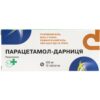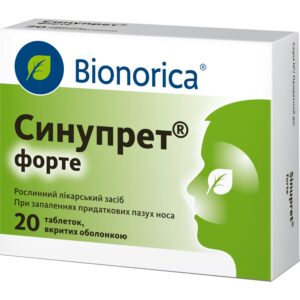Nasalong spray is prescribed for the treatment of acute rhinitis (runny nose) of any origin: infectious, viral, vasomotor or allergic (pollinosis). In the complex treatment of sinusitis, eustachianitis, otitis media.
In order to facilitate rhinoscopy and surgical manipulations in the nasal cavity.
Composition
active substance: oxymetazoline hydrochloride 100 g of the drug contain 0.05 g of oxymetazoline hydrochloride in 100% substance
auxiliary substances: benzalkonium chloride, polyethylene glycol, trilon B, propylene glycol, povidone, sodium phosphate dodecahydrate, potassium dihydrogen phosphate, purified water.
Nasalong ® belongs to the group of local vasoconstrictors (decongestants). Oxymetazoline hydrochloride is a synthetic adrenomimetic and has an alpha-adrenomimetic effect.
Contraindication
Increased sensitivity to the components of the drug.
Atrophic rhinitis.
When using MAO inhibitors (MAO) and within 2 weeks after stopping treatment with MAO inhibitors, as well as other drugs that contribute to an increase in blood pressure.
With increased intraocular pressure, especially with angle-closure glaucoma.
In severe forms of cardiovascular diseases (for example, ischemic heart disease, arterial hypertension).
Pronounced atherosclerosis, heart rhythm disorders (for example, tachycardia).
Pheochromocytoma.
Metabolic disorders (hyperthyroidism, thyrotoxicosis, diabetes, porphyria).
Hypertrophy of the prostate.
Features of application
Use during pregnancy or breastfeeding
It is not allowed to exceed the recommended doses. During pregnancy and breastfeeding, the drug should be used with caution only after careful assessment of the risk/benefit ratio for the mother and the fetus/child.
Children
The drug should not be used by children under 6 years of age.
The ability to influence the speed of reaction when driving vehicles or other mechanisms
After long-term use of the drug in doses exceeding the recommended, general effects on the cardiovascular and nervous systems cannot be excluded. In such cases, the ability to drive a vehicle may be reduced.
Method of application and dosage
1. Remove the protective cap. Before the first use of the drug, press the sprayer several times until a dispersed jet appears.
2. Insert the sprayer into the nasal passage and make an injection by pressing down on the sprayer with the index and middle fingers.
3. Make the required number of injections (see below) in each nostril; at the same time there is no need to throw the head back.
4. During the injection, it is recommended to inhale easily through the nose, which will contribute to the optimal distribution of the aerosol in the nasal cavity.
5. After use, close the sprayer with a protective cap.
Adults should be prescribed 1-2 injections, children older than 6 years – 1 injection in each nostril. The interval between applications of the drug should be at least 10-12 hours. The course of treatment is no more than 3-5 days.
Overdose
After a significant overdose or accidental ingestion, the following symptoms may occur: mydriasis, nausea, vomiting, cyanosis, fever, spasms, tachycardia, increased heart rate, arrhythmia, cardiovascular insufficiency, cardiac arrest, collapse, increased sweating, agitation, convulsions, arterial hypertension, pulmonary edema, respiratory disorders, pallor, miosis, hyposmia, mental disorders.
In addition, there may be excitation or suppression of functions of the central nervous system, manifested by drowsiness, a decrease in body temperature, bradycardia, hypotension, apnea, and the possible development of coma.
Therapeutic measures in case of overdose: gastric lavage, taking activated charcoal, lung ventilation. When lowering blood pressure, use phentolamine. Vasopressors should not be taken. If necessary, anticonvulsant therapy is indicated.
Adverse reactions
With frequent and long-term use, a burning sensation, tingling in the nose, flushing, sneezing, dryness of the mucous membrane of the nose and / or mouth or pharynx may occur. After the effect of using the drug ends – a feeling of severe nasal congestion (reactive hyperemia). Long-term continuous use of vasoconstrictor drugs can lead to tachyphylaxis or the development of drug-induced rhinitis. Apnea in newborns and young children (especially in case of overdose).
From the side of the cardiovascular system. Tachycardia, increased heartbeat (palpitations), increased blood pressure, heart pain.
From the side of the organs of vision. Eye irritation, discomfort or redness.
From the gastrointestinal tract. Nausea.
From the side of the immune system. Allergic and hypersensitivity reactions may occur, including rash, itching, angioedema (Angioedema).
From the side of the respiratory system. Discomfort or irritation in the nose, mouth and throat, as well as nosebleeds.
From the side of the nervous system. Anxiety, increased excitability, sleep disturbances, insomnia, drowsiness, increased fatigue, headache, convulsions, hallucinations (especially in children).
Interaction with other medicinal products and other types of interactions
With the simultaneous appointment of the drug with other vasoconstrictors (regardless of the method of administration), mutual enhancement of side effects is possible. Slows down the absorption of local anesthetics and prolongs their effect. Strengthens the effect of MAO inhibitors on the central nervous system. Due to the risk of increasing blood pressure, you should not use MAO inhibitors, tricyclic antidepressants and other drugs that contribute to increasing blood pressure together with the drug Nasalong ®.
Storage conditions
Store in the original packaging at a temperature not higher than 25 °C. Keep out of the reach of children.
Shelf life – 2 years.












Reviews
There are no reviews yet.